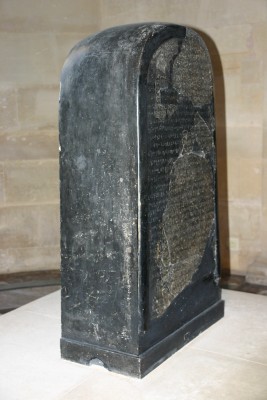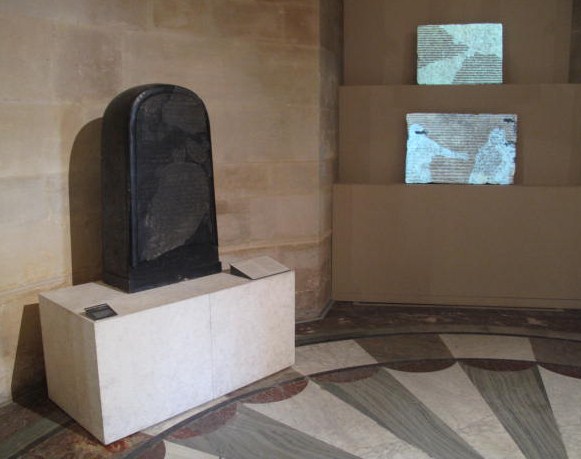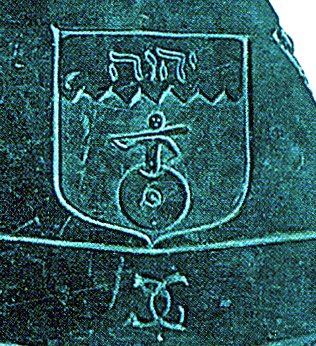Mesha Stele or Moabite Stone, Bible and Name of God

Mesha Stele AO 5066
Sully East Room D
The victory stele of Mesha king of Israel gives us one of the largest direct testimony on the world of the Bible.
Are also mentioned many biblical places which confirm the authenticity of their existing.
The Moabites, the descendants of Lot,
nephew of Abraham, were related to
the Israelites, which explains the similarity in
the language of the two peoples.
Mesha Stele : One of the largest direct statements
about the world of the Bible
The text does not follow a chronological order. In order to glorify the king and his actions during his reign, it highlights King Mesha’s own personal version of his revolt against Israel (2 Kings 1:1, 3:4-5).
The written mention of Israel on Mesha Stele :
the oldest known
I took the sacred vessels (?)
of Yahweh, and I dragged them
before Chemosh " A270
"The most important discovery
ever made
in the field of Eastern epigraphy "
Ernest Renan


YHWH or JHVH : Four letters or Tetragrammaton

The divine name appears here
in ancient characters,
in the form of four letters
or Tetragrammaton,
towards the right end of the 18th line.
The personal name of God, transliterated YHWH, is met for the first time in Genesis 2:4.
This verb in the imperfect tense of the causative form means 'he becomes’.
This sacred name appears almost 7000 times
in the Hebrew text.
YHWH : Inscription, Transcription, Signification,
Substitution and ... Pronunciation
"Suppose [...] they say:
'What is his name? '
What shall I say?
Then God said to Moses:
"I Shall be What I Shall be."
Exodus 3: 14
Therefore this is not to be taken just as "a mysterious name, which only suggests His existence or presence," as written by J. Bottero A271
Most versions replace the Tetragrammaton with titles such as 'Lord' or ‘Eternal’ A272, A273 . One of the reasons often suggested comes from an old Jewish tradition and a scruple, or even a superstitious fear to utter the 'ineffable name' in its true form in order not to violate the Third Commandment A274 (Exodus 20:7).
Besides the fact that this is a poor and wrong understanding of the Law, the risk resides in the depletion of the reading of the Bible, by not seeing the proper name of God anymore, because it is hidden behind a loan word. A275

the Tetragrammaton
GL. CN. 1984, 2363 OP. 6, 3188
Medieval Louvre - Napoleon’s Courtyard
Jesus among the doctors
INGRES inv 861.11
Montauban Museum
Temporary Exhibition
Louvre May 2006
Notice the Tetragrammaton on the forehead of one of
the Jewish priests A279


5th Paris
rue Mouffetard, Paris 5th

Some commentators have suggested, without certainty, the spelling "Yahweh" (Holman Christian Standard Bible) or 'Yahwé' (Jerusalem 2000, Osty, and The Bible of Peoples). Many Hebrew scholars believe that this pronunciation is the most likely. 'Jehovah' (Crampon 1905, King James Version, NWT) is the best known translation and one of the most widespread. A278
"It is generally thought that the name 'Jehovah' is an invention of Peter Galatin (1518).
However, it seems that this name was already commonly used before that date. It is found in a text by Raymond Martin in 1270 "
www.jewishencyclopedia.com
" The vocalization “Yahweh” is a hypothetical reconstruction of a name which original pronunciation was not known anymore.
This also applies to the vocalization "Jehovah", closer to that of Adonaï, but not a better translation of the original form.
Others simply remove the vowels and restore the Tetragrammaton YHWH. "
Jérusalem Bible, 2007 Edition